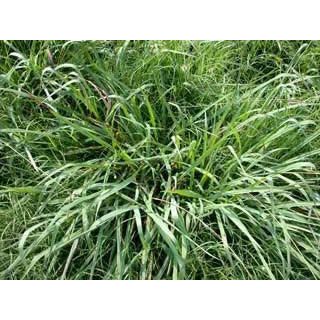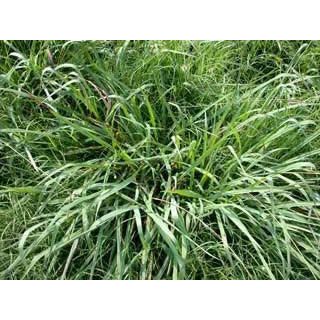Great seed!
Received and planted for small acreage horse farm. Germinated quickly and easy to spread. Packaging was secure and shipped quickly.
$19.95
PLANTING:
Competition from other grasses and weeds is the number one reason for bermudagrass stand failure. Taking steps to reduce this competition will increase your chances of success. Don't get in a hurry to plant. If soil temperature is not 65 degrees Fahrenheit or higher at a depth of 4", bermudagrass will not germinate. When the seed does germinate it will be weaker and more subject to disease.
For No-Till Drill
For Clean-tilled Ground — Broadcast
MANAGEMENT:
To establish, delay grazing or hay cutting until forage is 8” to 10” tall. Do not graze or clip for hay shorter than 2”. When new plants begin to spread, apply 50-60 lbs. of nitrogen per acre. After the stand is established, apply 50-75 lbs. of nitrogen per acre after each cutting of hay. If grazed, apply up to 150 lbs. /acre a year in split applications throughout summer. Rotate animals more often during periods of drought stress. Last nitrogen fertilizer application each year should not be applied less than 6 to 8 weeks before a killing frost to prevent winter kill. Leave at least 4” of growth entering winter. Maintaining medium to high levels of phosphorus and potassium in the soil throughout the growing season is key to disease prevention and bermuda stand survival. If season ending soil levels are low, apply phosphorus and/or potassium fertilizer per soil test recommendation in late summer/early fall to help prevent winter injury. In first year bermuda, late cuttings of hay (6-8 weeks before a killing frost) and/or overseeding of winter annuals can weaken and potentially thin the stand. Once the bermuda is well established (2nd year and older stands), overseeding of winter annuals is acceptable.

$9.95
Dallis Grass Seed for Pastures Perennial Scientific Name Paspalum dilatatum Seeding Rate 15-20 Lbs....

Sold Out $44.99
Imperial Whitetail Turkey Select Chufa Seed Turkey select is a high quality chufa seed. The plants...

Sold Out $30.00
Planting Persist Orchard Grass Seed Seeding Rate Seed Persist at 18-20 lbs per acre for...

$4.75
Whistler Winter Peas Whistler Winter Peas, released by Progene Research of Washington, are a semi-leafless,...
PLANTING:
Competition from other grasses and weeds is the number one reason for bermudagrass stand failure. Taking steps to reduce this competition will increase your chances of success. Don't get in a hurry to plant. If soil temperature is not 65 degrees Fahrenheit or higher at a depth of 4", bermudagrass will not germinate. When the seed does germinate it will be weaker and more subject to disease.
For No-Till Drill
For Clean-tilled Ground — Broadcast
MANAGEMENT:
To establish, delay grazing or hay cutting until forage is 8” to 10” tall. Do not graze or clip for hay shorter than 2”. When new plants begin to spread, apply 50-60 lbs. of nitrogen per acre. After the stand is established, apply 50-75 lbs. of nitrogen per acre after each cutting of hay. If grazed, apply up to 150 lbs. /acre a year in split applications throughout summer. Rotate animals more often during periods of drought stress. Last nitrogen fertilizer application each year should not be applied less than 6 to 8 weeks before a killing frost to prevent winter kill. Leave at least 4” of growth entering winter. Maintaining medium to high levels of phosphorus and potassium in the soil throughout the growing season is key to disease prevention and bermuda stand survival. If season ending soil levels are low, apply phosphorus and/or potassium fertilizer per soil test recommendation in late summer/early fall to help prevent winter injury. In first year bermuda, late cuttings of hay (6-8 weeks before a killing frost) and/or overseeding of winter annuals can weaken and potentially thin the stand. Once the bermuda is well established (2nd year and older stands), overseeding of winter annuals is acceptable.
{% render 'proviews_widget' %}




